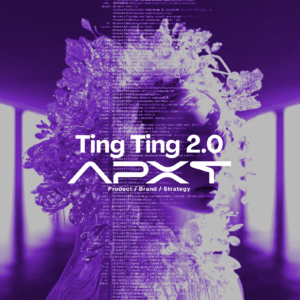Welcome to the Startup Founder’s Dictionary 101, where we speak the language of innovation, ambition, and business creation. Starting a business can feel like stepping into a new world with its own unique vocabulary. We get it; it’s a bit like learning a new language.
In the pages ahead, we’ve gathered a collection of terms that demystify the startup landscape. These words aren’t just definitions; they’re the building blocks of successful startups. They represent the tools, strategies, and stories of those who’ve walked this path before you.
As you explore this resource, remember that every term is a beacon of possibility. They’re the concepts that have fueled countless entrepreneurs’ journeys. Our hope is that this dictionary becomes your trusty guide in the world of entrepreneurship.
Financing Forms
1. Income Financing
– Financing obtained from customers. It is the best way to fund a company without the risk of ownership dilution or loan repayment issues.
2. Private Equity
– Investment in a company, typically through a direct share issuance. Private equity is usually repaid to investors only upon exit.
3. Debt Capital
– Loan-based instruments used by a company to finance its operations. Typically, a company can secure debt capital by demonstrating its ability to repay borrowed funds. The advantage of debt capital is that it does not affect the company’s ownership structure.
4. Public Funding
– Funding provided by the public sector. Public funding is offered under specific conditions and can take the form of grants, loans, or hybrids. Common funders include Business Finland, ELY centers, and certain foundations, as well as EU funding instruments.
5. Convertible Loan/Bond/Debt
– A financing instrument that can be converted into company shares under various conditions. The loan may be interest-bearing or interest-free. Conversion terms, such as the conversion ratio, are negotiated, and investors typically decide whether to convert the loan into shares or repay it according to the agreement.
6. Sweat Equity
– Investors who contribute value to a startup through their work and receive company shares as compensation instead of cash.
7. Venture Capital (VC)
– High-risk capital invested in startups, typically by venture capital funds. Capital is invested through a share issuance in the startup’s equity. These investments are high-risk and aim to support rapid company growth and value development.
8. Fund
– An investment fund that manages the assets of investors and invests them in assets such as stocks, bonds, or other funds. When you invest in a fund, you buy a share in that fund. The fund manager charges investors a fee for managing the assets, usually based on a percentage.
9. Business Angel
– A private individual who makes high-risk investments in companies either directly or through a company they own. In return, they receive company shares. These investments are recorded in the company’s equity and are used to support the company’s development and growth, often leading to an exit later on.
10. Family Office
– A company that manages the investments and wealth of wealthy families. Family offices typically have significant assets and varying amounts of investable assets. The goal of family offices is to efficiently grow and transfer wealth across generations. Family investment companies often selectively invest in high-risk startups.
11. Syndicate/Syndication
– Parties that invest in startups (typically business angels, venture capital funds, and family investment companies) coordinate their investments by networking with each other. Syndicating parties aim to align their investment terms.
12. Smart Money
– An investment that not only provides capital to a startup but also offers expertise, networks, or other assistance in developing the company. Smart money investors seek to influence the company’s future beyond providing capital, often through their skills and expertise.
13. Crowdfunding
– A method by which a company raises funds from a wide group of individual investors. Crowdfunding is typically conducted online through crowdfunding platforms, using various service providers.
Financing Rounds
14. FFF (Friends, Fools & Family)
– Typically the initial investors in a startup: friends, individuals with a high tolerance for risk, and family members. They provide trust capital crucial for a startup’s early stage.
15. Pre-Seed
– The first seed funding round for a new business idea. This funding is often used for developing customer understanding, concepting, building the first version of the brand, and prototyping the product or service.
16. Seed
– The second seed funding round, typically following the pre-seed round. This funding is used for scaling operations, developing products or services, and preparing for internationalization.
17. Series A
– The first significant equity financing round in a startup’s lifecycle. These rounds are usually led by venture capital funds and are used for scaling the business, entering new markets, and building a robust organization.
18. Series B
– The second significant equity financing round, often following a successful Series A round. They are used for further scaling, expanding market presence, and strengthening the company’s position in its industry.
19. Series C
– Subsequent rounds of equity financing that occur after Series A and Series B rounds. They are used for global expansion, acquisitions, and solidifying a company’s position as a market leader.
Legal and Organizational Terms
20. Shareholder Agreement
– A legally binding agreement between a company’s shareholders. It outlines the rights, responsibilities, and obligations of each shareholder and helps prevent disputes.
21. Board of Directors
– A group of individuals responsible for making strategic decisions for a company. Board members are typically elected by shareholders and include both internal and external members.
22. Limited Liability Company (LLC)
– A legal structure for businesses that offers limited liability protection to its owners (shareholders).
23. CEO (Chief Executive Officer)
– The top executive responsible for overall management and decision-making in a company.
24. CDO (Chief Design Officer)
– The top executive responsible for design strategies.
25. CFO (Chief Financial Officer)
– The executive responsible for overseeing financial aspects of a company.
26. CTO (Chief Technology Officer)
– The executive responsible for technological strategies.
27. Intellectual Property Rights (IPR)
– Legal rights that protect intellectual property, including patents, trademarks, copyrights, and trade secrets.
28. Exit Strategy
– A plan outlining how founders and investors intend to realize their investment, typically through an acquisition or IPO.
29. IPO (Initial Public Offering)
– The process of a private company becoming publicly traded.
Marketing and Growth Terms
30. Product-Market Fit
– The stage at which a product or service satisfies market needs and gains customer adoption.
31. Customer Acquisition Cost (CAC)
– The cost to acquire a new customer.
32. Churn Rate
– The rate at which customers stop using a product or service.
33. Growth Hacking
– Innovative marketing and product development strategies.
34. Landing Page
– A web page designed to capture visitor information.
35. KPI (Key Performance Indicator)
– Metrics to measure a company’s performance.
36. B2B (Business-to-Business)
– Selling to other businesses.
37. B2C (Business-to-Consumer)
– Selling to individual consumers.
38. Customer Lifetime Value (CLTV)
– Predicted net profit from a customer over their relationship.
39. User Acquisition
– Attracting new users or customers.
40. Virality
– Extent to which a product or content is shared among users.
Product Development and Technology Terms
41. Minimum Viable Product (MVP)
– Basic product version for user feedback.
42. Agile Development
– Flexible, collaborative software development.
43. Scrum
– Framework within Agile development.
44. DevOps (Development and Operations)
– Combining software development and IT operations.
45. API (Application Programming Interface)
– Rules for software communication.
46. SaaS (Software as a Service)
– Software distribution model via the internet.
47. Open Source
– Publicly available software source code.
48. UX (User Experience)
– Overall user interaction satisfaction.
49. Beta Testing
– Testing with select users before full release.
50. Feature Creep
– Addition of unnecessary product features.
51. Scalability
– Ability to handle increased work or users.
Remember that entrepreneurship is all about real-world experiences and every term you’ve encountered here is like a tool in your entrepreneurial toolkit—a toolkit that’s uniquely yours.
In the startup world, every challenge is an opportunity to learn, every setback is a chance to pivot, and every day holds the promise of progress. The path may not always be smooth, but it’s filled with moments of growth, resilience, and accomplishment.
Please let us know if something was missing from this list!
Stay Curious, Stay Innovative.
Ting Ting Zhao
Ting Ting Zhao is a Digital Editor at Apxt. Passionate explorer of the intersection between creativity and technology. With an insatiable curiosity, I decode the complex tapestry of design, brand communication, and emerging technologies. As a seasoned critic and strategist, I’m on a mission to demystify the strategic potential of design in the digital age. Join me as we navigate the ever-evolving landscape, unraveling possibilities, and shaping brands that thrive in the dynamic world of innovation.



